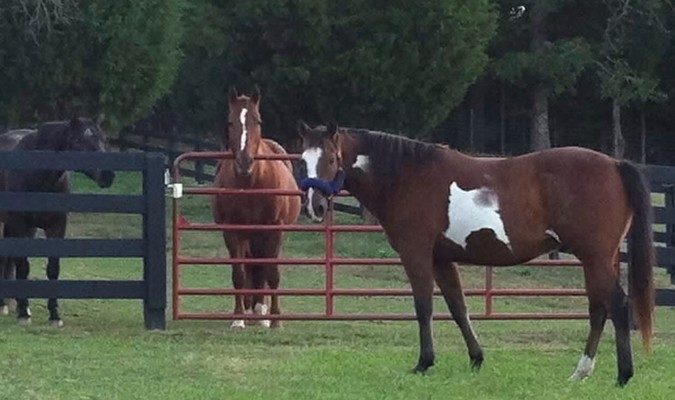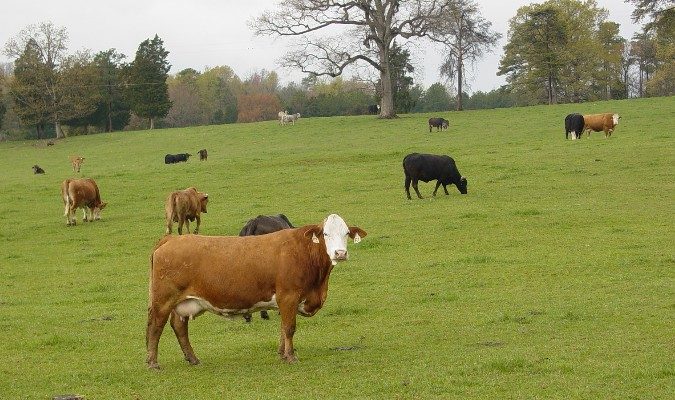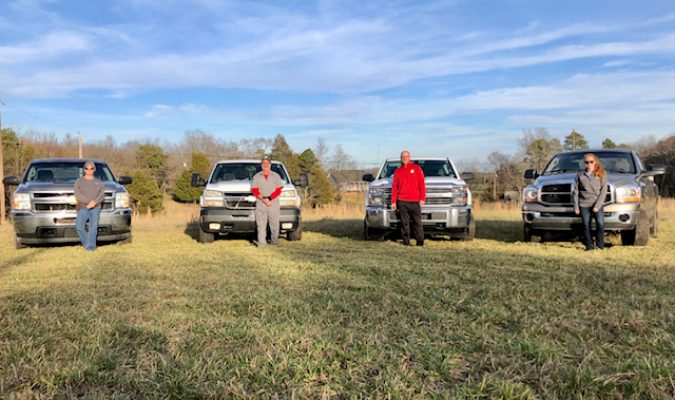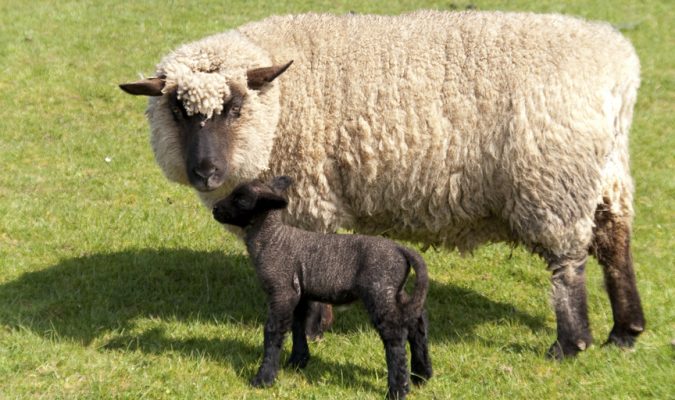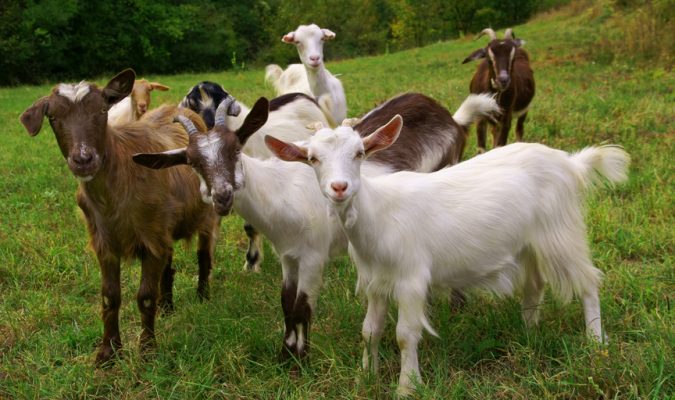With the warmer temperatures as of late, spring just around the corner, and the incoming flush of green grass, we wanted to use this month’s newsletter to prepare and inform you on the risk of laminitis to your horse. Laminitis is the more scientific name for founder, which some people are more familiar with. The terms founder and laminitis will be used interchangeably throughout the article. We hope this article provides you with a strong understanding of what’s going on, why it could have happened, and what can you do to prevent it from happening again.
What Is Laminitis
Laminitis is a scientific way of saying that the tissue that holds the coffin bone in the hoof is inflamed and damaged. This tissue is known as laminae, and there is a layer on the surface of the coffin bone that connects to a layer on the inside of the hoof like Velcro®. So, when the tissue becomes inflamed or injured the ability of one side to hold onto another is weakened potentially allowing for the coffin bone to sink and or rotate. Depending on the severity of the inflammation, clinical signs can range from mild foot soreness to severe lameness. Laminitis is typically worse in the front feet because they bear the majority of the horse’s weight (60% in front versus 40% in rear), but laminitic bouts can also afflict the hind feet.
The clinical signs associated with laminitis are dependent on the degree of injury. Some feet may be more affected than others. Foundered horses may spend more time laying down or be unwilling to move. When they’re standing you may notice them camping their front feet out in front of them and placing their back feet underneath them to take weight off the more affected front feet.
What Are The Causes Of Laminitis
There are multiple reasons for a horse to develop laminitis making determining the underlying cause difficult in some circumstances. Below is a list of possible causes of founder in horses.
- Exposure to Lush Green Grass: Green grass can contain high amounts of sugar especially during mid-day when the sunshine and photosynthesis is at its peak. The high levels of sugar and starch in the grass will cause high levels of insulin circulating in the blood. Some horses can manage these high levels of insulin and sugar in the blood, but some horses with underlying conditions such as Cushing’s Disease and Insulin Dysregulation are unable to manage the high insulin levels. These high levels of insulin circulating for longer periods of time damage the laminae cells in the hoof leading to the clinical signs observed.
- Severe Intestinal Disease: Any inciting cause of severe intestinal disease can allow for bacteria or toxins produced by the bacteria to move across the intestinal wall and enter the blood stream leading to systemic inflammation. One of the manifestations of the systemic inflammation can be laminitis. Below are some of the more common causes of laminitis due to intestinal disease.
- Colic
- Diarrhea
- Grain Overload
- Severe Infection: Any systemic infection allowing for bacteria to enter the bloodstream and leading to systemic inflammation. Below are some of the more common causes of laminitis due to infection.
- Pneumonia
- Uterine Infection (due to retained placenta after foaling)
- Cushing’s Disease: Also known as Pituitary Pars Intermedia Dysfunction (PPID), Cushing’s Disease causes abnormal hormone regulation. This allows for increased levels of circulating cortisol in the blood. These horses also tend to have abnormal fat and insulin regulation. This predisposes these horses to laminitis at a higher frequency compared to other horses.
- Equine Metabolic Syndrome (EMS): This is an endocrine condition composed of a triad of effects in the body being obesity and/or localized fat deposits, insulin dysregulation, and laminitis. This condition typically affects ponies, donkeys, and obese horses.
- Road Founder: This can be caused by a horse training on hard surfaces for extended periods of time leading to trauma to the laminae cells weakening their connection.
- Contralateral Limb Laminitis: If a horse has a limb fracture or is unable to bear weight on one of its legs, then the other leg is forced to bear the entire weight of that horse. This excess in weight for extended periods of time puts undo stress on the laminae cells in the hoof often leading to laminitis in the “good” leg.
- Poor Hoof Conformation: The horses with excessive toe length and/or lack of farrier care can be a predisposition for horses to founder due to the increased leverage and pressure placed on the tip of the coffin bone. This excessive pressure on the tip of the coffin bone can lead to weakening and separation of the laminae.
- Exposure to Black Walnut Shavings: This is occasionally used for bedding, but should be avoided in horses as the shavings are toxic even in small amounts. Ingestion of these shavings can cause laminitis along with colic and fever.
How To Treat Laminitis
So, depending on the suspected underlying cause of the laminitic bout will dictate the course of treatment necessary for a successful outcome for that horse. Below are a list of general treatment strategies that work for most causes of laminitis.
- Cold Therapy: During a bout of laminitis it’s recommended to place the feet in ice for the first 3-5 days at least. The ice or cold water needs to be applied to the feet continuously during this time for the best results.
- Pain Management: It is essential to institute pain management in the laminitic horse to help keep the horse comfortable, eating, and drinking well. So, the horse will be placed on pain medications such as Bute daily. Additional and stronger pain medications can be added depending on the response to treatment.
- Anti-inflammatory Therapy: The “itis” in laminitis means inflammation, and so it makes sense to provide these horses with anti-inflammatory medications such as Bute. Another strong anti-inflammatory medication that we reach for with these horses is known as DMSO. Both of these medications help by removing the inflammation from the hoof.
- Dietary Management: During laminitic bouts we must limit spikes in insulin to help prevent further worsening of the laminitis. To limit insulin spikes we must limit the horse’s exposure to sugar/starch in its diet. So, the horse will be pulled off of grass entirely and put on a soaked hay diet. By soaking the hay in water (30 minutes for hot water or 60 minutes for cold water) and dumping the water out before offering it. It will leech the sugars out of the hay, and then by offering the hay to the horse through a hay net this will prevent them from ingesting too much hay at one time limiting any chance of an insulin spike.
- Nursing Care: Necessary nursing care while this horse recovers is vital to allowing for a speedy recovery for the horse and limiting the damage done. This includes providing deep bedding to help cushion the sore feet and encourage the horse to lay down. It will also help to apply strapon frog cushions to at least the front feet to help provide the horse some pain relief.
- Hoof Care: Another important aspect of managing these horses with hoof damage is to provide them the appropriate farrier care once the initial hoof inflammation is under control. So, once the horse is comfortable enough to stand for the farrier, therapeutic trimming and shoeing can be done to provide the horse more relief.
- Pergolide (Prascend®): This is the drug of choice when it comes to treating Cushing’s Disease in horses. It works by blocking dopamine receptors in the hypothalamus thereby decreasing the unregulated amount of hormones produced by the horse. It is also a very effective drug for preventing laminitis in horses.
How To Prevent Laminitis
Once a horse has been through a bout of laminitis, they may require additional care going forward depending on the underlying cause and extent of damage evident on radiographs.
- Monitoring Underlying Disease: If a horse is thought to have Cushing’s Disease or Equine Metabolic Syndrome as the underlying cause for its laminitic episode, then those horses should have diagnostic blood testing to confirm. Once the respective cause has been identified and the horse is placed on the appropriate treatment plan designed for that individual horse going forward. That horse will still require at minimum annual blood testing to ensure that horse’s Cushing’s and insulin are both being regulated appropriately.
- Maintaining Appropriate Farrier Care: A horse that has gone through a bout of laminitis should have radiographs performed on the affected feet to identify any sinking or rotation of the coffin bone. This will provide an understanding of the prognosis for the expected work of that horse going forward, and if that horse can handle it. This will also help your farrier to trim and shoe your horse appropriately to maximize your horse’s comfort. The horse may require trimming and shoeing at an increased frequency of every 3-4 weeks instead of every 6 weeks after they have foundered.
- Dietary Management:
A horse that is diagnosed with Cushing’s and/or EMS will require closer dietary management than before. If the horse is overweight at the time of diagnosis, these horses will be put on a calorie restricted diet limiting sugars and starches from pasture and grain along with increasing exercise once the horse is comfortable. After the weight has reached a more appropriate weight level, those horses can typically resume limited pasture turnout along with the implementation of a grazing muzzle.
When it comes to pasture turnout for these horses it’s best to allow turn out early in the morning when sugar levels in the grass are lowest, and then pulling those horses off the grass before midday when the sunshine and sugar content are at its peak. Another method that can be effective in the spring as the flush of green grass starts is to gradually increase your horse’s access onto pasture. This can allow the grass to mature past the early growth stage where the grass is loaded with sugar to a more mature stage. Some horses (minis) have to be pulled off of pasture entirely and be kept on a dry lot going forward due to the higher risk of laminitis. It’s also recommended to avoid stressed grass such as after drought, frost, or overgrazing as the grass can contain higher levels of sugars at that time.
Easy keeping horses will typically be maintained long term on a ration balancer type of grain to limit sugars as much as possible while still meeting the horse’s vitamins, minerals, and proteins that the forage doesn’t provide. Horses resistant to weight loss strategies can be placed on specific medications to assist in weight management and insulin regulation.
Below are a list of helpful websites that dive into some of these topics:
Equine Metabolic Syndrome: https://cvm.msu.edu/vdl/client-education/guides-for-pet-owners/an-owners-guide-to-equine-metabolic-syndrome#:~:text=Laminitis%2C%20a%20major%20part%20of,pneumonia)%2C%20complicating%20their%20treatment.
Cushing’s Disease: https://cvm.msu.edu/vdl/client-education/guides-for-pet-owners/equine-endocrinology-pituitary-pars-intermedia-dysfunction-ppid
Lush Green Grass Laminitis: https://vetmed.illinois.edu/pet-health-columns/spring-grass-and-laminitis-in-horses/
Black Walnut Toxicity: https://ker.com/equinews/black-walnut-poisoning-in-horses/
I hope these resources and information provide you with a greater understanding of the complexity of laminitis when it comes to the causes, treatments, and what’s actually going on in the hoof. If you have questions regarding the information discussed in this newsletter or want to discuss your laminitic horse then please give us a call at the office!
Written By: Dr. Gunner Edgell
Rocky River Large Animal Veterinary Clinic is here to serve you and your animals.

